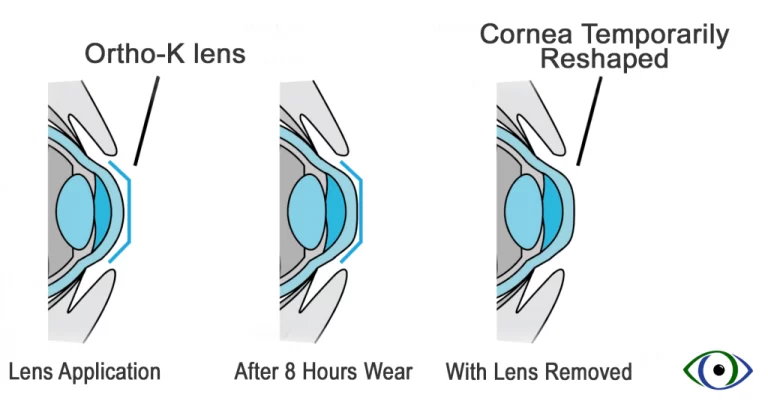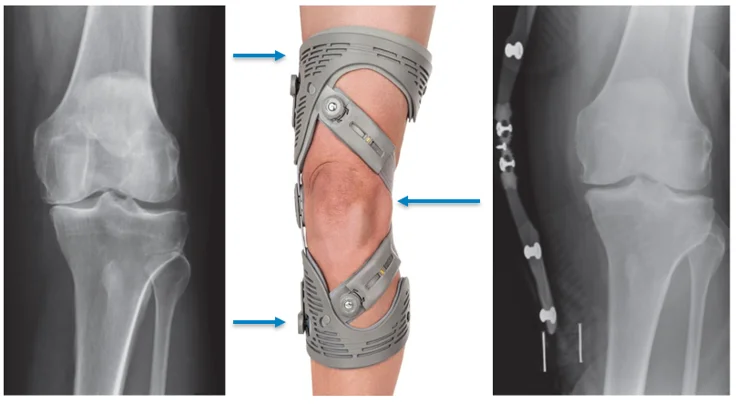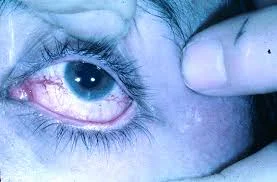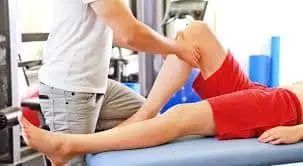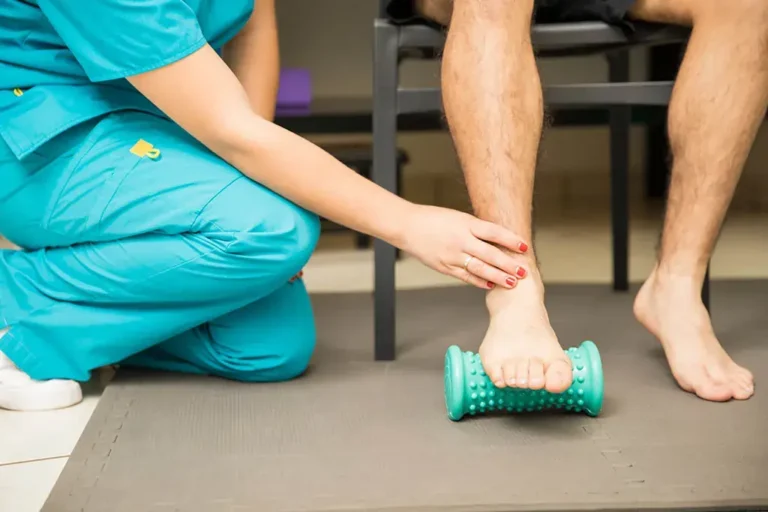Vojta Therapy
Introduction
Vojta Therapy is a dynamic approach to treating neuromuscular problems that is based on reflex locomotion and developmental kinesiology. This approach aims to assist individuals with disorders affecting the central nervous system and musculoskeletal system. Developed in the 20th century by child neurologist Prof. Vaclav Vojta, it’s largely utilized in Europe currently.
What is Reflex Locomotion?
A reflex is an involuntary movement triggered by external stimuli, while locomotion refers to the capacity to move from one location to another. Both response at various circuit levels of the central nervous system and the coordinated, rhythmic activation of the complete skeletal musculature are involved in reflex locomotion.
Reflex Locomotion – The Fundamentals of Vojta Therapy: Introduction
The therapeutic application of reflex locomotion enables the re-emergence of fundamental movement patterns in patients with compromised central and locomotor systems to some extent, making them accessible again. Reflex locomotions are triggered “reflexogenically”. In this context, “reflex” does not pertain to the type of neuronal control but is instead linked to the externally applied therapeutic stimuli and their consistently identical, “automatically” present movement responses.
Vojta therapy involves the therapist applying precise pressure to particular body parts while the patient is lying on their side, back, or stomach. This stimulation, regardless of age, automatically and involuntarily elicits two movement complexes without requiring conscious effort from the individual: reflex creeping when lying prone, and reflex rolling from either a supine or side-lying position. Reflex creeping manifests as a form of crawling, while reflex rolling commences from a back-lying position and transitions through a side-lying posture into what is known as quadrupedal gait.
The entire skeletal musculature engages in rhythmic, coordinated movement during reflex locomotion, and the central nervous system responds at different circuit levels. The pressure-induced motor reactions, initiated from a defined starting position, progress regularly and cyclically, and in newborns, they can be fully stimulated and reproduced as often as needed.
Every developmental motor movement—grasping, rolling, crawling, standing, and walking—becomes observably active. According to Prof. Vojta, these movements are already present in children at certain developmental stages, even if they have not yet acquired these abilities spontaneously.
Reflex locomotion is used therapeutically to activate the involuntary muscle activities necessary for spontaneous daily movements in patients, especially in the spine but also in the hands, feet, limbs, and facial region.
Prof. Vojta believed that the repeated stimulation of these “reflex-like” movements can result in a process akin to “freeing a switch” or establishing “new connections” within functionally blocked nerve networks linking the patient’s brain and spinal cord.
The purpose of using reflex locomotion therapeutically
Through engaging with reflex locomotion, the fundamental elements of human uprighting and movement, namely:
- Body balance during movement (“postural regulation”)
- Raising the body against gravity
- intentional limb gripping and stepping motions (also known as “phasic mobility”)
should become once again attainable and usable.
The Distinction from Other Physiotherapy Approaches and Strategies
Functional movements like grabbing, rolling over, and walking are not directly practiced in Vojta Therapy. Instead, the therapeutic activation of reflex locomotion enables access to the distinct segmental movement patterns required for specific motions through the central nervous system.
These segmental patterns become more accessible without the patient’s assistance following Vojta treatment. Regularly repeating the “normal movement” stored within the brain helps prevent the training of compensatory movements, which would merely serve as substitutes for the genuine, desired “normal movement”.
Activating Vegetative and Other Automatic Reactions
Alongside the primary motor processes, reflex locomotion can also activate specific responses, including:
- conjugate eye movement (oculomotor activity)
- Jaw and tongue motions (orofacial motor activity)
As well as autonomic functions such as:
- regulating bladder and bowel function
- breathing
- sucking and swallowing.
The Relationship Between Reflex Locomotion and Normal Motor Development
All of the fundamental elements of human motor development up to autonomous walking are included in the segmental patterns of reflex locomotion. These segmental patterns are “activated” in the central nervous system by regular Vojta Therapy, which guarantees that the activated state lasts outside of therapy and has a beneficial effect on the child’s or adult’s spontaneous movements.
Through consistent Vojta Therapy, the segmental patterns in the central nervous system are stimulated, allowing this activated state to continue beyond the therapy, thereby positively influencing the spontaneous movements of the child or adult. Clinically, experience shows that after activation through reflex locomotion, a patient (whether a child or adult) often exhibits a much more complete—even normal—body posture. This enhancement also provides the patient with greater emotional stability to engage with the surrounding world and accumulate experiences.
Vojta Therapy in Childhood
Vojta Therapy is applicable for both newborns and children. It is recommended based on a medical diagnosis and specific therapy goals outlined accordingly. The best outcomes are achieved when the patient has not yet adopted any so-called substitute motor patterns. For those who have developed established “substitute motor activities,” the treatment aims to activate and sustain physiological movement patterns while reducing non-established abnormal movement patterns, integrating them into normal motor functioning until complete mastery of conscious motor skills is reached.
New-Born Babies Crying in Vojta Therapy
During Vojta Therapy, newborn babies often express the desired activated state through crying, which understandably may cause concern for parents and lead them to think that their child is in pain. However, at this stage, crying serves as an important and appropriate form of expression as the little patients react to unfamiliar activation.
Usually, after a brief adjustment period, the intensity of the crying diminishes, and newborns calm down quickly during breaks and post-therapy. In older children who can vocalize, crying typically does not occur.
Vojta Therapy in Adulthood
For adults experiencing impairments that affect the peripheral and central nervous regulation of movement, Vojta Therapy can be beneficial even during the acute phase of an illness, as well as in the subsequent rehabilitation. The therapy aims to regain access to previously healthy movement patterns, which helps prevent aftereffects like pain or functional and strength limitations.
An additional benefit of ongoing treatment is the impulses it provides, which positively influence higher cortical functions such as motivation, concentration, patience, speech acquisition, multitasking, perception, and emotional well-being. The primary objective of Vojta Therapy is to restore the patient’s everyday competency. This means that the treatment should allow the patient to engage as fully as possible in all activities, including family, schooling, work, leisure, and similar aspects of life.
Range of Effects for Vojta Therapy
The extensive effects of Vojta Therapy assist patients of all ages with various conditions, including cerebral palsy, spinal scoliosis, and hip joint dysplasia and dislocation. Even in cases of severe cerebral movement disorders, there is a significant positive impact on upright mechanisms, support functions, and communication abilities. Vojta Therapy serves as a standard treatment in physiotherapy for nearly every movement disorder and a multitude of conditions, such as:
- disturbances in central coordination during infancy
- movement issues from central nervous system damage (including cerebral palsy, stroke, multiple sclerosis)
- peripheral paralysis of the arms and legs (for instance, plexus paresis, spina bifida, paraplegia, etc.)
- various myopathies
- spinal curvature (scoliosis) and other limitations and symptoms related to spinal function
- orthopedic or traumatic issues involving the shoulders, arms, hips, and legs
- co-treatment for hip joint malformations (like hip dysplasia or dislocation)
- difficulties with breathing, swallowing, and chewing functions.
Vojta Therapy’s Impact on Communication and Patient Development
Positive improvements in movement coordination for speaking, walking, gripping, and standing up against gravity are made possible by Vojta therapy. As a result of these changes, the child or adult can more easily and comprehensively convey their wants and needs and fulfill them independently. Patients experience reduced frustration and appear happier and more balanced.
Older children or adults often report feeling “lighter” in their movements after Vojta treatment. This favorable emotional foundation translates into a noticeably enhanced ability to communicate. Overall, Vojta Therapy significantly improves motor learning opportunities for patients as they navigate their environment.
In addition to Vojta Therapy, parents do not need to provide continual observation or corrective intervention, allowing the newborn or child to move freely and spontaneously. The Vojta Principle states that there are no bad postures that could make the treatment less effective.
As Vojta Therapy “activates” postural and movement functions, it effectively encourages the development of motor skills.
Vojta Therapy “activates” the postural and movement functions of a newborn baby or child’s central nervous system, allowing for an enhanced level of movement that can typically be sustained throughout the entire day after just a few brief therapy sessions.
Consequently, this therapy supports the young patient in fostering self-sufficiency and independence from caregivers, which is the primary aim of the treatment. Additionally, Vojta Therapy bolsters parents in their parenting roles: during daily sessions, the child receives physical touch and guidance from parents that instill a sense of safety. This method thus strengthens the bond between parent and child, leading to new and enriching experiences for the child.
Frequency and Exercise Intensity in Vojta Therapy
Reflex locomotion is a highly effective therapy, particularly for newborns and infants, but it is also unfamiliar and quite demanding. Like many other forms of physiotherapy, Vojta Therapy requires a significant commitment from parents or caregivers.
For Vojta Therapy to yield positive results, it is generally recommended that it be conducted multiple times per day for newborns and infants. Usually, each session lasts five to twenty minutes.
Duties of Parents/Caregivers in Vojta Therapy
Given that they conduct Vojta Therapy multiple times a day, parents or other caregivers are essential to the practice. When treating adult patients, Vojta Therapy can also be delivered by a spouse, life partner, or a close individual, with treatments usually occurring several times a week.
Indications
Vojta claims that this therapy is appropriate for patients of all ages and can be used as a routine physiotherapy treatment for a variety of diseases and mobility problems, such as:
- Infantile postural asymmetry
- Another name for congenital muscular torticollis is “wry neck.”
- Stroke
- Cerebral palsy
- Lumbosciatica
- Hip dysplasia
- Respiratory distress syndrome (RDS)
- Migraine
- Peripheral paralysis of the limbs (such as plexus paresis, spina bifida, paraplegia, etc.)
- Various myopathies
- Disorders affecting breathing, swallowing, and chewing functions
Contraindications for Vojta Therapy
The following circumstances should not be addressed by Vojta therapy:
- Acute feverish or inflammatory conditions
- Live vaccine vaccinations following a doctor’s directive (usually 10 days post-vaccination)
- Pregnancy in patients
- Certain medical conditions, such as imperfect osteogenesis or heart disease.
The application of 4 Vojta therapies.
In any condition that may affect the patient’s overall health, Vojta Therapy can still be administered for shorter durations, based on the patient’s tolerance level, but it doesn’t necessarily need to be avoided.
The application of the four types of Vojta therapies involves stimulating motor patterns of reflex locomotion through ten distinct zones. Applying light pressure to specific stimulus zones (muscles or bones) and providing resistance against current movements prompts the patient’s involuntary motor responses and the execution of certain movement patterns.
There are two main stages to the Vojta method:
- Reflex crawling is the practice of lying down with the chest down and back up.
- Lying flat with the chest up and back down is known as reflex rolling.
Reflex locomotion can be activated from three main positions:
- Prone
- Supine
- Side-lying
The particular ailment being treated as well as the level of difficulty and accuracy of the exercises are key factors in the Vojta treatment’s efficacy and eventual success. After a physician refers a patient to Vojta Therapy, the Vojta therapist develops a personalized program and collaboratively sets therapeutic goals with the patient and their parents.
The therapy plan is then updated at regular intervals according to the patient’s progress.
Parents or caregivers typically receive immediate instruction from the Vojta therapist to enable them to begin treating their child at home while ensuring the necessary intensity of treatment is maintained. Regardless of age, all patients are required to attend the Vojta physiotherapist’s outpatient clinic on a regular basis.
Vojta Therapy in Interdisciplinary Treatment Teams
Prof. Vojta recognized that enhancements in the body posture regulated automatically are essential for advancing the patient’s readiness, sensory perception, communication, and learning. Consequently, Vojta Therapy strengthens the foundational requirements for various therapies, including special education, speech therapy, occupational therapy, and others. Therefore, Vojta Therapy holds a significant and fundamental role within interdisciplinary treatment teams.
How can Vojta Therapy’s efficacy be demonstrated?
Vojta Therapy has demonstrated its effectiveness globally across a broad patient demographic, from newborns to adults. The reflex locomotion observed by Prof. Vojta, along with the therapy’s outcomes and successes, has undergone numerous scientific evaluations and has been empirically substantiated. Additionally, some isolated evidence-based studies support its effectiveness.
Investigations into Vojta Therapy’s Psychological Impact
Various researchers have investigated the potential negative impacts of Vojta Therapy, particularly concerning psychological effects, on the sensory-motor development and social and communicative behavior of treated newborns or children.
They emphasized comparisons with untreated or differently treated children, as well as the implications for the mother-child relationship. However, these studies indicated that Vojta Therapy does not produce any psychological negative effects; rather, it may have beneficial impacts on the psychological level.
Who administers Vojta Therapy and Diagnostics?
The International Vojta Society (IVS) has partnered with a certified group of teaching physicians and physiotherapists. This collective includes members who were trained directly by Prof. Vojta and has been educating certified Vojta therapists and medical professionals for over 40 years worldwide, enabling them to officially provide Vojta Therapy to patients. Since Vojta Therapy can be largely carried out by parents at home, it remains quite affordable.
Training Vojta Therapists and Doctors
Certified Vojta physiotherapists have completed a professional qualification course in Vojta Therapy that adheres to the standards and guidelines set by the International Vojta Society (IVS), with eight weeks dedicated to treating newborns and children, and six weeks focused on adults. Candidates must have achieved qualifications as physiotherapists or physicians and possess a minimum of two years of professional experience, preferably with neurologically atypical newborns, children, or adults, to be eligible for this training.
In addition to these qualification programs, there are one-week refresher courses for physicians focusing on the neurological assessment of newborns and infants using Vojta Diagnostics.
Additional Professional Education for Vojta Physiotherapists and Physicians
In addition to the previously mentioned qualification programs for physiotherapists, one-week refresher courses for doctors are available that focus on the neurological examination of newborns and infants based on Vojta Diagnostics. In order to provide Vojta refresher courses and seminars on specific Vojta Therapy and Diagnostics topics for physicians and therapists, the International Vojta Society (IVS) frequently partners with clinics and institutes in Germany and other nations.
The International Vojta Society (Internationale Vojta Gesellschaft e.V.) is also notable. /IVG) works with professional associations for physiotherapists (the ZVK e.V. and IFK e.V.) to provide Vojta therapists with opportunities for continued education, which includes case presentations and supervision from Vojta teaching therapists affiliated with the IVS in approximately 70 Vojta study groups (encompassing around 1600 trained Vojta therapists) that occur several times per year.
Intervention Mechanism
The reflex locomotion induced by Vojta therapy is linked to specific alterations in cortical and subcortical brain activation when contrasted with a sham treatment. Tactile stimuli delivered to predetermined areas of the body engage the central nervous system.
If these stimuli are provided accurately and consistently, the resulting motor patterns become ingrained in the brain and can be executed voluntarily by the individual. Additionally, it can stimulate vegetative and autonomic responses, including eye coordination, jaw and tongue movements, bowel and bladder regulation, as well as sucking, swallowing, and breathing.
Evidence
High-level evidence supporting the use and effectiveness of Vojta treatment is lacking. Some case reports, along with controlled and experimental studies, have been documented. Only a single high-quality randomized controlled trial was identified, where research findings indicated a statistically significant improvement in infantile postural asymmetry in the Vojta group compared to the Neurodevelopmental treatment (such as the Bobath approach and massage). The authors suggest that the results may be elucidated by Vojta Therapy.
Efficacy of Vojta Therapy
Core muscle tension is crucial for stabilizing the trunk. When balanced correctly among the various muscles, the resulting optimal tension enhances stabilization and maintains proper spinal alignment. In individuals experiencing low back pain, there is often a marked imbalance in muscle tension that worsens the pain and leads to increased trunk instability.
A recent controlled study aimed to assess the impact of the Vojta technique on the core muscles of healthy young adults without any signs of spinal instability. Reflexes in the experimental group were stimulated through targeted reflex activation while lying on their sides to encourage spontaneous movements. The control group also underwent stimulation but outside the reflex zones.
Each treatment lasted five minutes on each side, administered three times a week for a total of 10 sessions. Changes in muscle thickness were evaluated via ultrasonography. Notable changes in core muscle thickness were observed in the experimental group, suggesting a correction in muscle tension and recruitment patterns. There were no similar impacts in the control group.
Vojta Therapy at NYDNR
In the past, Europe was where Reflex Locomotion Therapy was most widely accepted. To keep at the peak of their game, great players including Roger Federer, Novak Djokovic, and Jaromír Jágr use Vojta. In 2002, The novel treatment was brought to the US by NYDNR.
Additional facts
In Germany, Vojta therapy is recognized as a valid treatment for infant asymmetry and is protected by health insurance. In collaboration with numerous clinics and institutions in Germany and other nations, the International Vojta Society regularly organizes educational events on Vojta Therapy and Diagnostics.
The Basics of Vojta Therapy: Reflex Locomotion
Vojta Therapy
Prone, supine, and side-lying are the three main positions from which reflex locomotion can be triggered, according to Vojta. To evoke movement patterns, Vojta describes ten distinct zones located on the body, arms, and legs. By combining various zones and adjusting pressure and extension, both reflex rolling and reflex creeping patterns can be activated.
Furthermore, achieving optimal joint angles in the extremities and specific resistances is essential, where the therapist provides resistance against the segmental movements in the current movement pattern. For instance, during reflex creeping, the tendency for the head to rotate is resisted and stabilized.
As a result, tension in the surrounding musculature of the “resisted” body part increases, without additional contraction (isometric contraction). Additionally, this method strengthens the muscles of the back, arms, legs, and belly, among other distal body parts.
Two Coordination Complexes in Reflex Locomotion
Two coordination complexes have been found in the real-world implementation of reflex locomotion:
- Reflex Creeping
- Reflex Rolling
These complexes were initially observed and applied in children and young individuals with established movement disorders (e.g., spastic paralysis). Through watching the stimulation of healthy newborns, it was later realized that these are innate movement complexes that can also be utilized in therapy for newborns.
One Principle – Many Variations
It is always possible to retrieve the reflex locomotion movement sequences. The primary positions—prone, supine, and side-lying—offer over thirty variations. By mixing and varying stimulation zones and resistances, along with making slight adjustments in pressure directions and joint angles in the starting position, Therapy can be customized to the distinct clinical characteristics and therapy objectives of every patient.
- A series of motions involving the fundamental components of locomotion is referred to as reflex creeping:
- Specific control of posture
- Extension or upright positioning against gravity, and
- deliberate arm and leg stepping movements.
- Thus, the basic patterns of human movement are included in reflex crawling. The primary position is lying face down, with the head turned to one side on the bed.
- The zones of stimulation and the first location of reaction crawling are depicted in the above image. These “stimulus points,” along with the angles of the head and limb joints, initiate the creeping motor sequence and the corresponding contractions of the muscles.
- In newborns, reflex creeping can be fully activated from a single zone; however, in older children and adults, a combination of several pressure points is needed.
- Movement mainly occurs in a cross pattern, where the right leg and left arm, or the opposite combination, move together. One leg and its opposite arm support the body while propelling the trunk forward.
- The reflex creeping sequence is illustrated below.
- In therapy, the therapist establishes appropriate resistance against the initial head rotation of the patient. This reinforces the activation of the overall body muscles, thus laying the foundation for uprighting.

Reflex creeping aims specifically at:
- Activating the muscular support and upright mechanisms required for standing, grasping, walking, and stepping actions of the arms and legs.
- causing the respiratory system, the stomach muscles, the pelvic floor, and the sphincters that line the colon and bladder to contract.
- Facilitating swallowing, which is crucial for chewing.
- Enabling eye movements.
Coordinating reflex rolling transitions from lying on the back to lying on the side, leading to crawling. In a healthy newborn, part of this movement pattern is spontaneous and can typically be seen around the sixth month of life, with additional elements observable by the eighth or ninth month. This can even be induced in neonates with Vojta treatment.
Thus, the basic patterns of human movement are included in reflex crawling. The zones of stimulation and the first location of reaction crawling are depicted in the above image. These “stimulus points,” along with the angles of the head and limb joints, initiate the creeping motor sequence and the corresponding contractions of the muscles.
Several stages of side and back laying are treated by reflex rolling:
Phase 1
Lying on one’s back with arms and legs outstretched is the first step. Rotation to the other side is made easier by stimulating the breast zone, which is situated in the intercostal region beneath the nipple at the seventh and eighth ribs on the mammillary line side. The practitioner or therapist offers resistance to head rotation.
Phase 1 of Reflex Rolling: Activation while Lying on the Back with Newborns and Adults
The fundamental reactions include:
- Extension of the spine.
- keeping the legs in this posture outside the back’s support foundation and against gravity.
- Preparing the arms for their forthcoming supportive function.
- Lateral eye movements.
- Initiation of swallowing.
- Increased depth of breathing.
- coordinated and distinct abdominal muscular contraction.
Phase 2
When lying on one’s side, reflex rolling enters its second phase. It contains motion patterns that are also seen in lateral movement, rolling, and crawling on their own. The underlying arm and leg support the body and elevate it forward against gravity. Muscle activation in the supporting arm occurs from the shoulder to the elbow and eventually to the hand.
Phase 2 of Reflex Rolling: Activation while Lying on the Side with Newborns and Adults
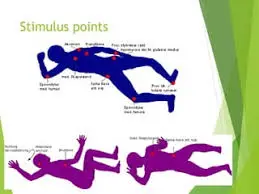
Fundamental reactions involve:
Opposing flexion and extension movements of the arms and legs, enhancing the support function on the underneath shoulder, extending to the hand, as well as on the underlying pelvis extending to the leg.
the spine’s extension during the rolling motion.
Maintenance of the head’s position while lying on the side, against gravity, until the movement concludes in crawling.
Even post-treatment, the pattern of movement remains active in the patient’s brain for varying durations. Consequently, the patient often retains spontaneous access to the patterns activated during multiple daily treatment sessions throughout the day, displaying lasting improvements in posture, movement, and perception. The patient’s natural access to the activated patterns during multiple daily treatment sessions often continues throughout the day, leading to a lasting enhancement in posture, movement, and perception.
The Comprehensive Effect
The movement sequences described in reflex locomotion according to Vojta encompass the fundamental movement patterns essential for developing normal motor functions related to human posture and movement. Each patient must be treated individually, considering their primary condition and the associated possibilities and limitations.
Numerous disorders have been shown to benefit from the wide-ranging effects of the Vojta Method, including hip dysplasia and dislocation, spinal scoliosis, and cerebral palsy. Even in cases of severe cerebral movement disorders, there is a visibly positive impact and beneficial changes in upright movements and the capacity to communicate. Specifically, the influence of Vojta Therapy on patients can cover the following areas:
Skeletal Musculature
- The spine exhibits segmental extension, rotation, and enhanced functional mobility.
- The head has increased freedom of movement.
- Joints, particularly at the hip and shoulder, achieve better centering.
- Incorrect postural habits decrease in frequency.
- Hands and feet can be utilized in a more targeted and effective manner for grasping and supporting functions.
Face and Mouth Area:
- Movements for sucking, swallowing, and chewing become easier.
- The eyes can move independently of the head and with more intent.
- Voice volume and clarity increase.
- Speech acquisition is made easier, with clear enunciation improving intelligibility.
Respiratory Function:
- The rib cage becomes more expanded.
- Breathing becomes deeper and more regulated.
The Autonomic (Involuntary) Nervous System:
- Better blood flow to the skin occurs.
- The sleep-wake cycle improves.
- The regulatory functions of the bowel and urinary bladder get activated.
Perception:
- Balance reactions show improvement.
- Spatial orientation enhances.
- Sensations of cold, warmth, sharpness, or dullness become heightened or more precise.
- Proprioceptive awareness becomes clearer.
- The ability to recognize shapes and structures solely through touch (stereognosis) improves.
- Concentration skills develop to be more consistent and adaptable.
The Mind:
Patients appear more balanced, cheerful, and emotionally resilient.
Implementation: Team Work
The Vojta therapist’s thorough instructions give the mother confidence that she can care for her child at home.
To ensure Vojta Therapy is effective, sessions usually need to be carried out several times a day (up to four times if required). Each therapy session ranges from five to twenty minutes. Since they oversee daily therapy, parents or other caregivers play a crucial role in the application of Vojta Therapy.
The primary condition, along with exercise intensity, frequency, and precision, influences treatment effectiveness and overall success. After a physician refers a patient for Vojta Therapy, the therapist develops a personalized program and sets therapy goals collaboratively with the patient and their parents.
The treatment approach should be promptly communicated to parents or caregivers, allowing therapy to commence at home and ensuring necessary treatment intensity is achieved. The Vojta therapist continues to assist the parents during the therapy, which may continue for weeks, months, or even years. The therapy program, frequency, and any necessary pauses in treatment are adjusted regularly based on the patient’s progress.
Summary
Vojta Therapy, or reflex locomotion, was developed by Czech pediatric neurologist Prof. This specialized form of physical therapy was primarily designed to foster a child’s development and address severe neurological disorders such as cerebral palsy.
Since its inception, reflex locomotion has been systematically advanced and now constitutes a broader set of neurophysiological principles that have seen extensive application in therapeutic practices. According to Kolar, Dynamic Neuromuscular Stabilization (DNS) Therapy is predicated on the neurophysiological underpinnings of reflex movement.
Adults and elderly individuals who suffer from acute and chronic back pain, herniated discs, or trauma can also benefit from reflex locomotion and DNS therapy.
Reflex locomotion was developed through empirical observation. Professor Vojta noted how an infant stabilized themselves through movements and discovered that this elicited a “global” dynamic muscle activity characteristic found in all forms of human locomotion, serving as the foundation for human movement.
The “global pattern” pertains to the rehabilitation of infants, children, adolescents, and adults.
The therapeutic objectives of reflex locomotion involve stimulating coordinated muscle activity, which is often impaired in any central or peripheral nervous system lesions or movement apparatus dysfunctions.
FAQs
What is Vojta therapy?
Vojta Therapy | Physiopedia
Vojta therapy is a dynamic neuromuscular treatment approach that incorporates ideas from reflex locomotion and developmental kinesiology. This therapy is intended to treat people suffering from central neurological and musculoskeletal system diseases.
What does Vojta mean?
Vojta’s Origin and Meaning
The name Vojta, which means “joy in battle,” is given to boys. A diminutive of Vojtech, a Czech name that is a cognate of Wojciech, a Polish given.
What impact does the Vojta approach have on healthy people’s trunk stability?
By engaging the deep and trunk muscles of the spine, Vojta reflex locomotion has been demonstrated to enhance spinal rotation force and control trunk stability (Son, 2000). This improves postural control.
What are the benefits of trunk stability?
Having a strong, steady core helps us avoid injuries and perform at our best. To protect the back, we should aim to create 360 degrees of stiffness around the spine while moving, running, jumping, throwing, lifting objects, and transferring force throughout our bodies.
References
- Vojta therapy https:/www.physio-pedia.com/Vojta_Therapy Physiopedia.
- Vojta Therapy. https://www.vojta.com/en/the-vojta-principle/vojta-therapy
- Fundamentals. https://www.vojta.com/en/the-vojta-principle/vojta-therapy/fundamentals
- Vojta Therapy. NYDNRehab.com. https://nydnrehab.com/treatment-methods/vojta-therapy/


